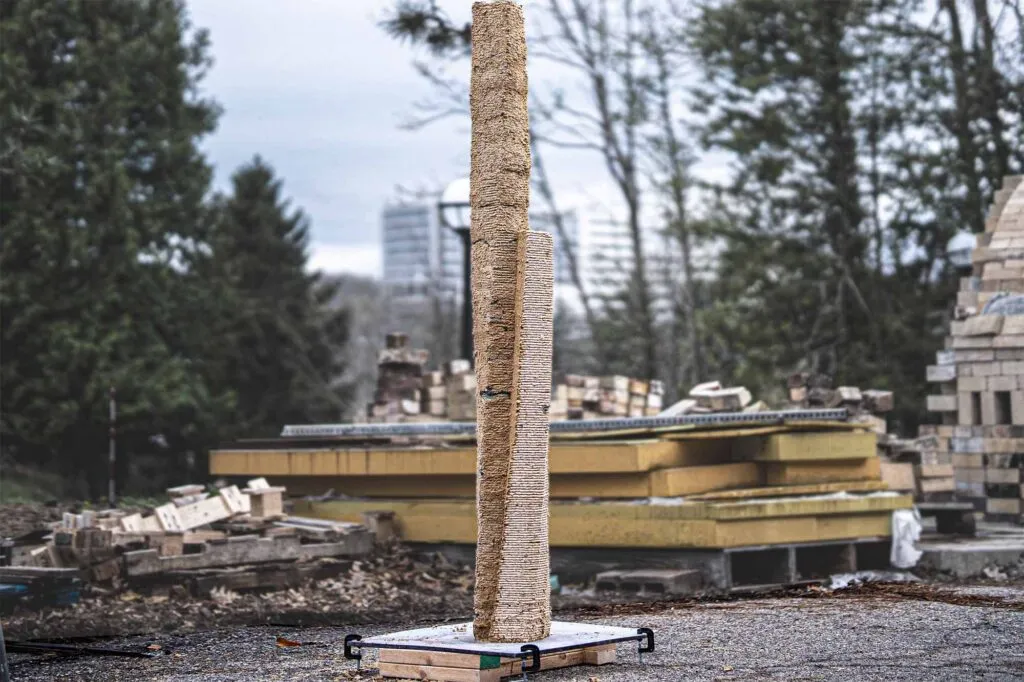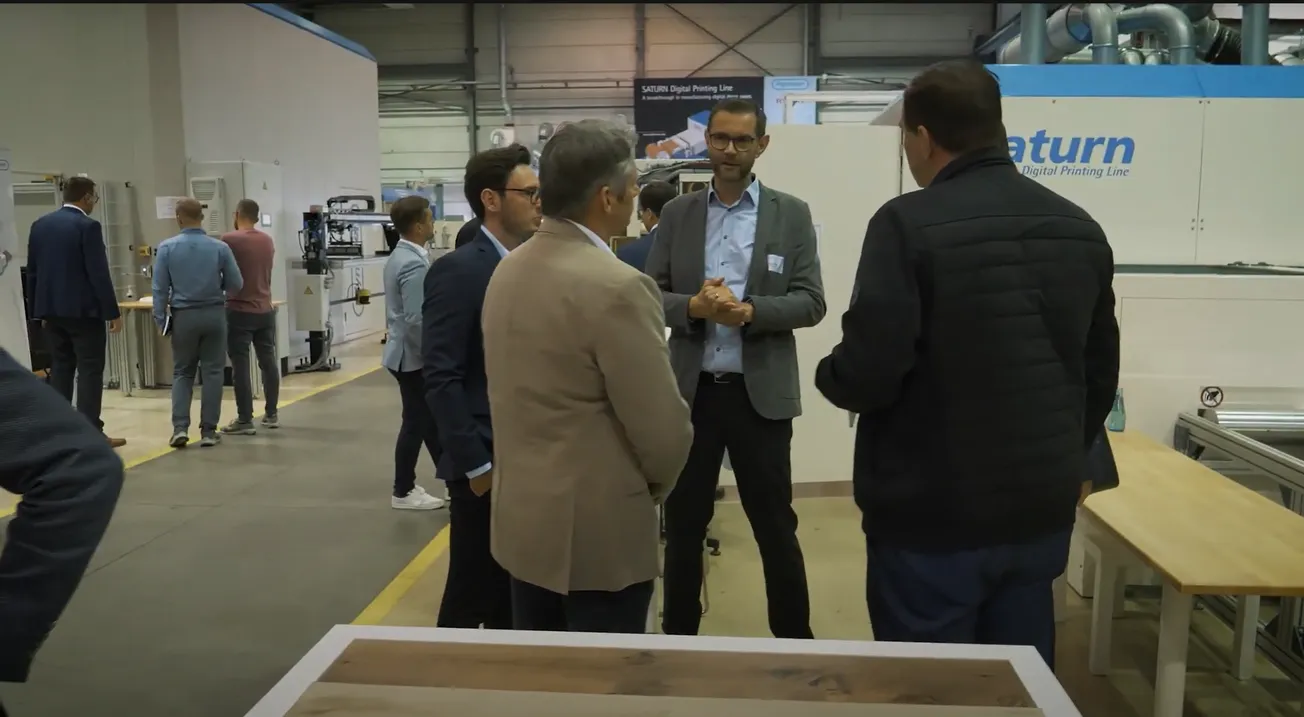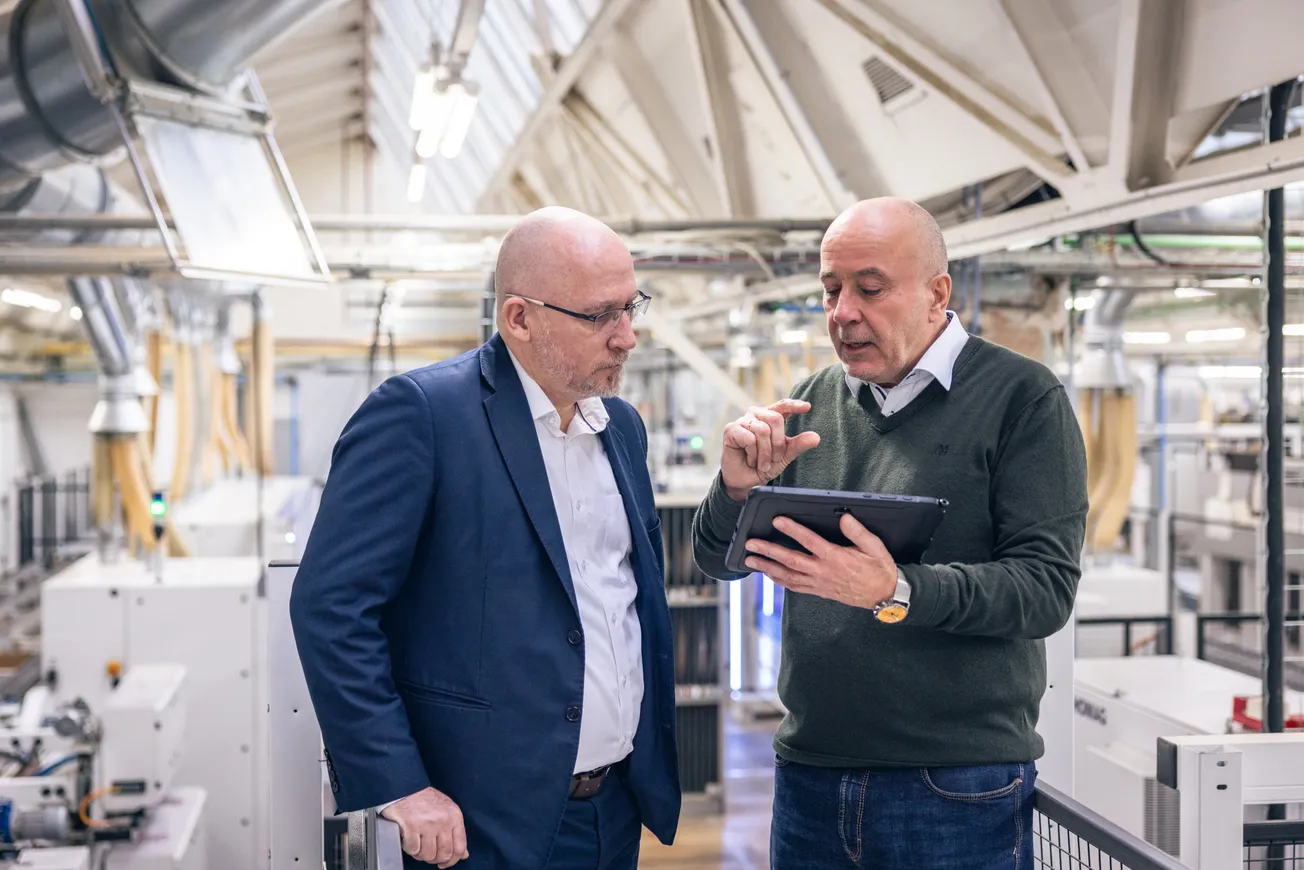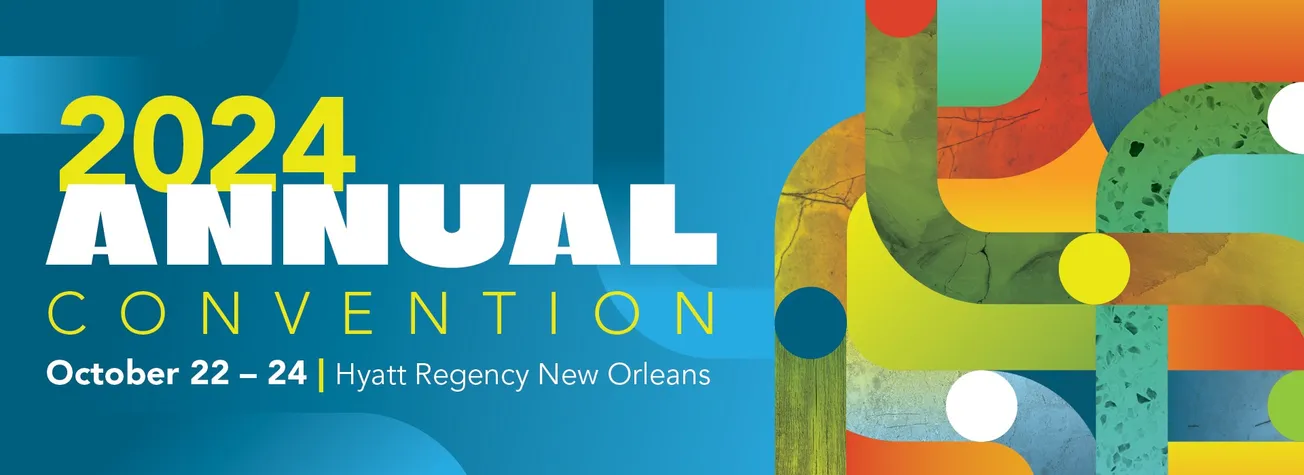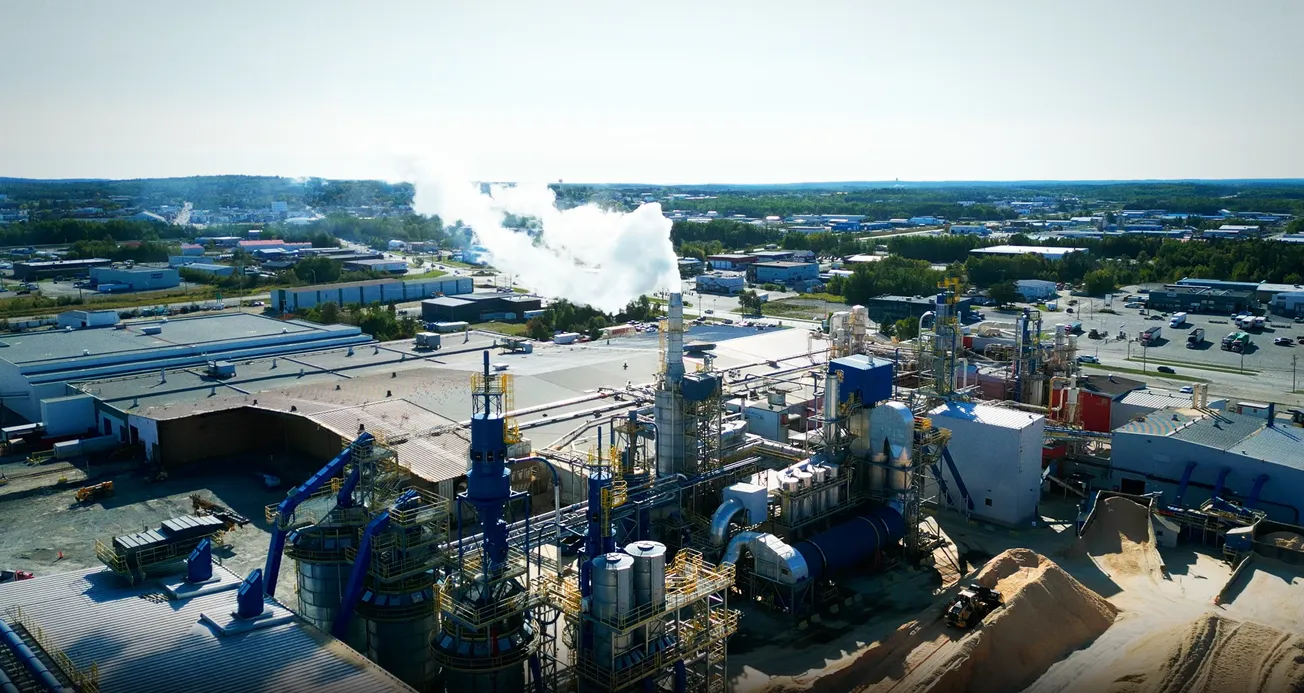Table of Contents
At the University of Michigan, the BioMatters team has pioneered a groundbreaking approach to construction by creating a fully biodegradable, reusable, and recyclable formwork material designed to minimize waste in the construction industry.
This cutting-edge material is derived from upcycled sawdust, a byproduct that typically accumulates in large quantities (millions of tons annually) due to the extensive cutting of trees, and is often disposed of through burning or landfilling, contributing to environmental degradation.
Capitalizing on this abundant resource, the team from the Taubman College of Architecture and Urban Planning, along with the Digital Architecture Research & Technology (DART) Laboratory, have developed an innovative use for the sawdust produced in Taubman's Fabrication Laboratory.
Muhammad Dayyem Khan, a DART researcher, highlights the uniqueness of their biodegradable biomaterial, which is made from sawdust and biopolymers, making it fully decomposable and remarkably easy to recycle and reuse.
The initiative, spearheaded by DART director Mania Aghaei Meibodi and researchers Tharanesh Varadharajan, Zachary Keller, and Khan, presents a revolutionary method that merges robotic 3D printing of this wood-based material with an incremental set-on-demand concrete casting process to produce zero-waste freeform concrete structures. This 3D-printed wooden formwork not only shapes the concrete during casting but also reinforces it to prevent any deformation.
Once the concrete solidifies, the formwork is effortlessly removed and entirely recycled by grinding it and rehydrating it with water, offering an almost waste-free formwork solution.
Khan also underscores the environmental hazards posed by decomposing sawdust, which releases toxic substances like lignin and fatty acids, contaminating water and affecting a wide array of organisms. Moreover, its flammability heightens the risk of wildfires.
Addressing a critical issue in the concrete industry, where traditional wood formwork constitutes 40% of the costs and contributes significantly to environmental damage upon disposal, this innovation proposes a sustainable alternative.
Khan emphasizes the potential of this vast quantity of sawdust, suggesting that it be repurposed into a material with enduring utility rather than being discarded or incinerated, thereby curbing CO2 emissions.
This research is a leap forward in promoting sustainable construction practices that aim to reduce waste, pollution, and resource consumption within the concrete industry. By repurposing a generally unused byproduct of the wood industry, this initiative marks a significant advancement towards eco-friendly and efficient concrete construction methodologies.


